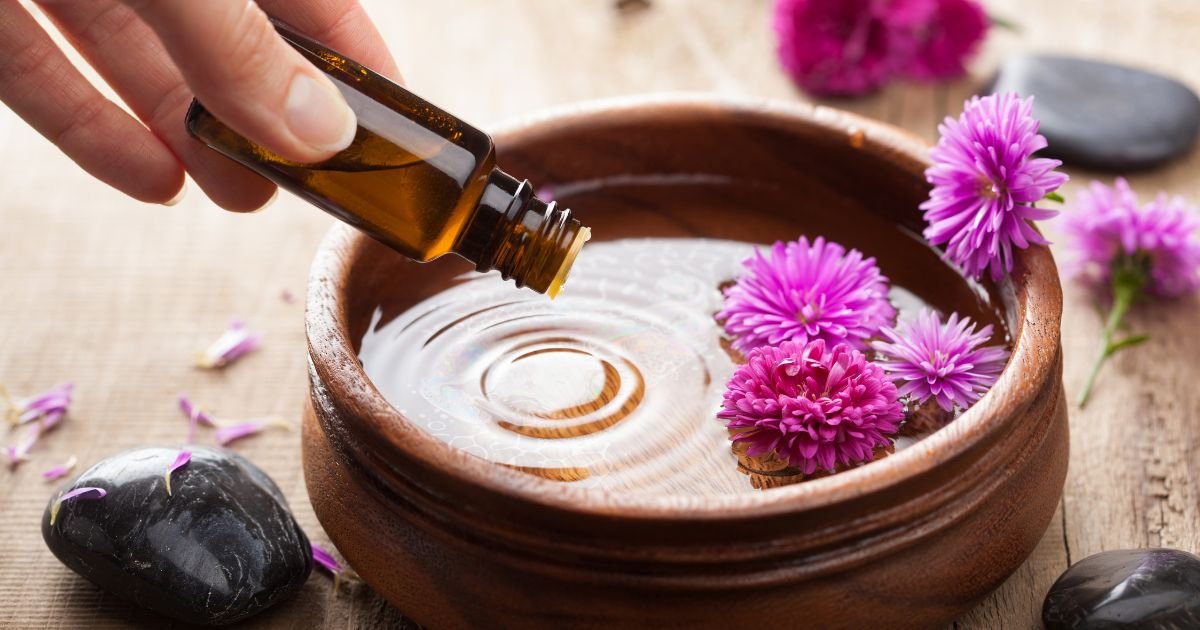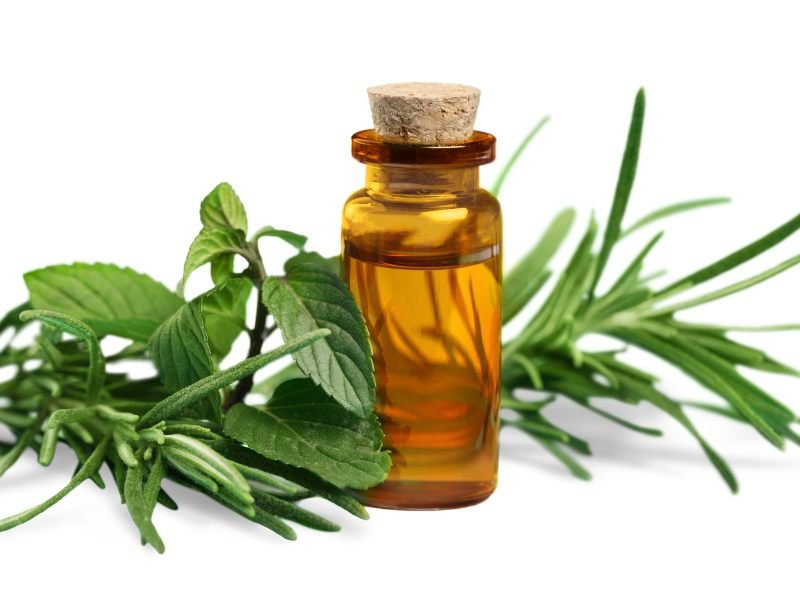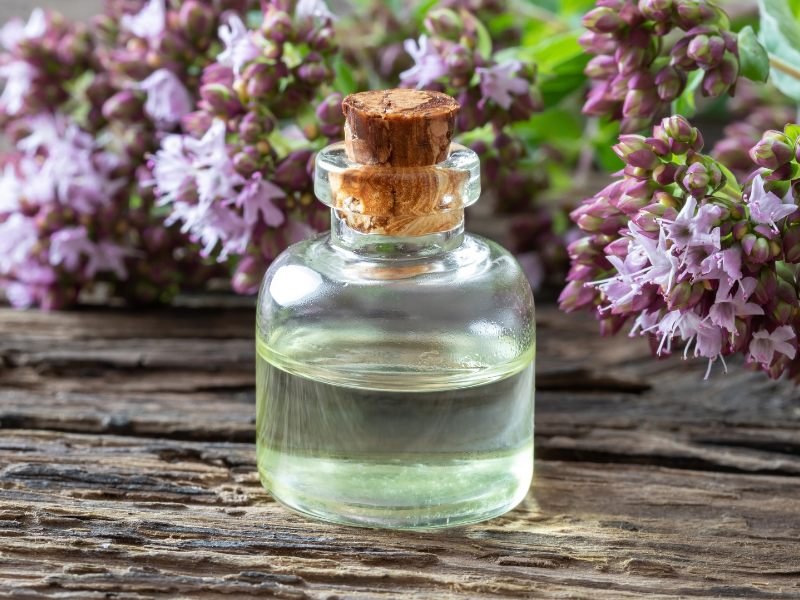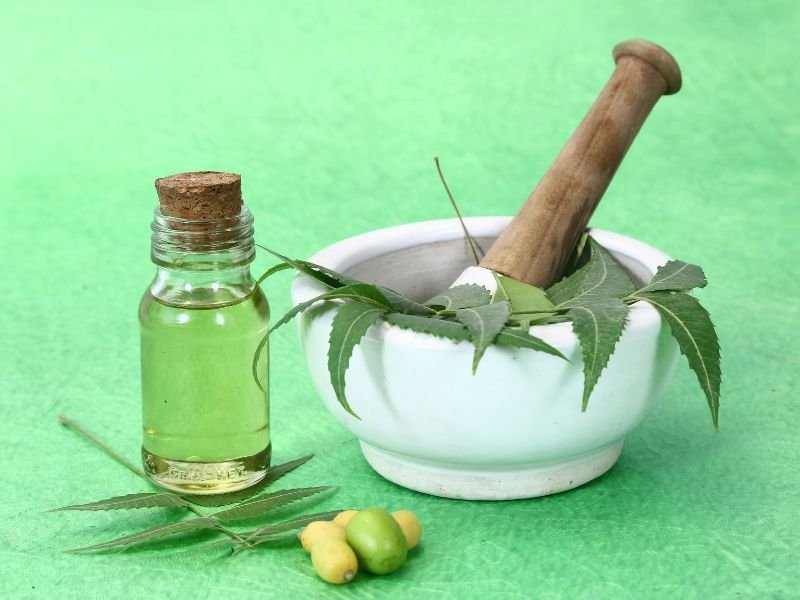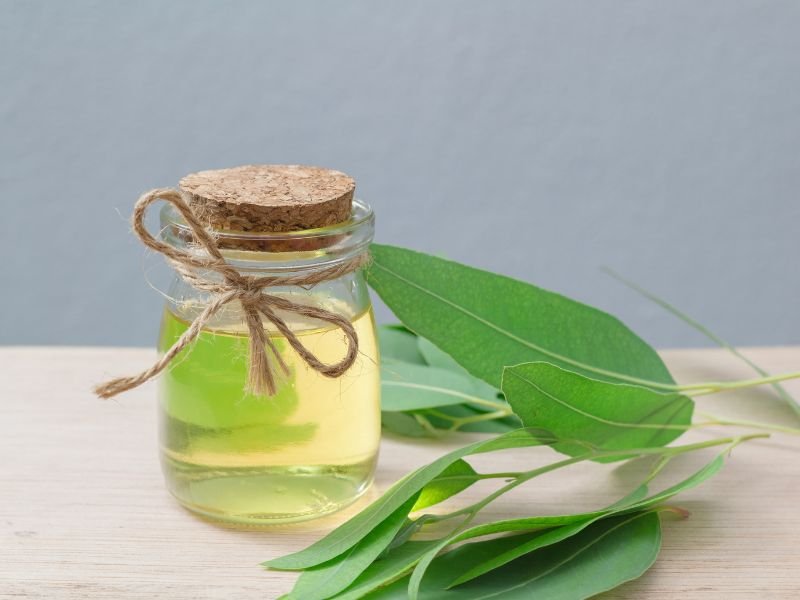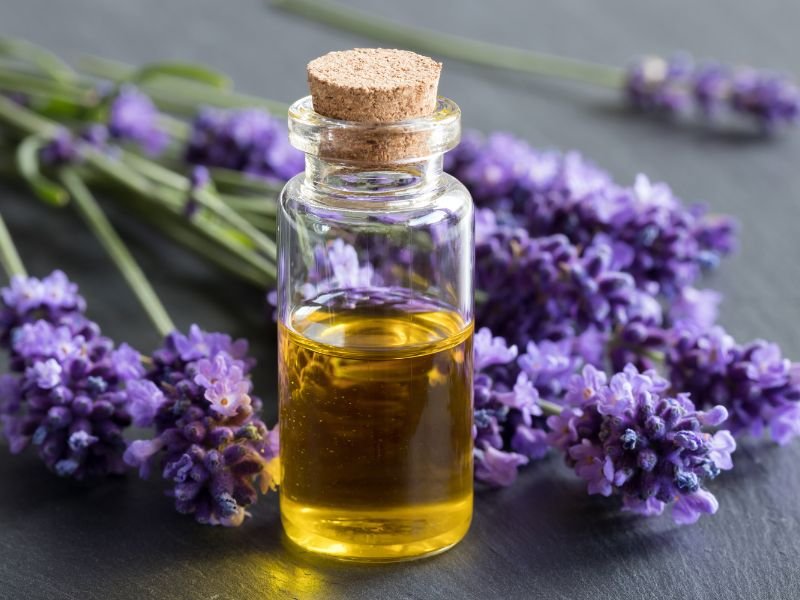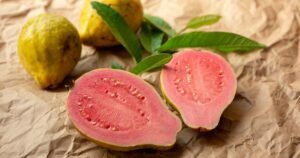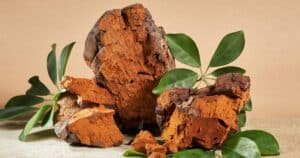Best 9 Essential Oils for Warts: A Beacon of Hope
If you are looking for a natural way to treat warts so you have to come to the right place. There are many common treatments available for warts, like cryotherapy, salicylic acid, and laser treatments.
But many people are moving on to natural remedies at home to avoid harsh chemicals and potential side effects.
This is where essential oils come in—used for centuries to treat many diseases, including warts for their antiviral, antibacterial, and skin-healing properties [1, 2].
In this blog post, I will show you the 9 best essential oils for warts with reliable research. It’s important to note that before using any essential oil, dilute it with carrier oil.
What Are Warts?
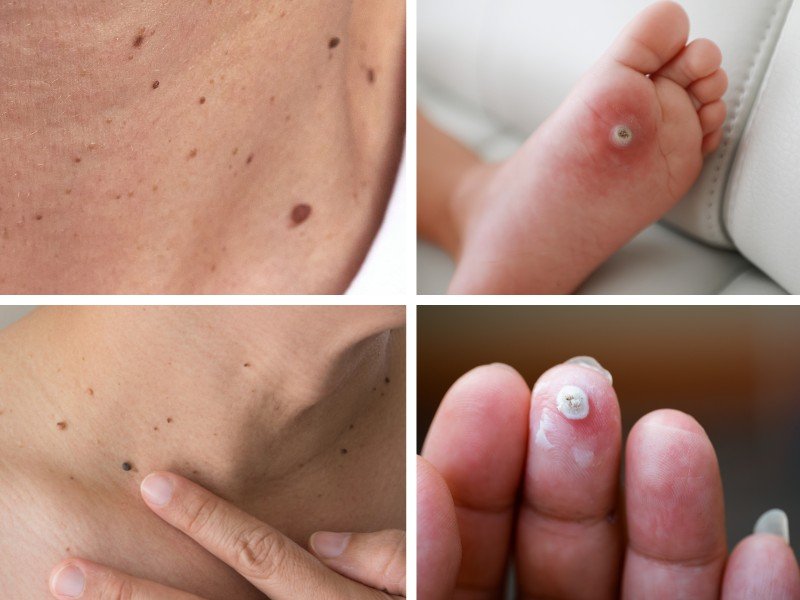
The human papillomavirus (HPV) causes warts, which is a common skin condition. These small, rough growths can occur in any part of the body, such as hands, feet, neck, and face [2].
Warts totally affect 10% of people around the world, but most affect school-aged children about 10% to 20%. Warts are contagious and can easily spread to another body [2].
HPV can cause different types of warts, like common warts, plantar warts, flat warts, and genital warts. A specialist doctor should always treat genital warts, as they are the most serious [2].
9 Best Essential Oils For Warts
With the following essential oils, you can rid of warts:
1. Tea Tree Oil
Tea tree (Melaleuca alternifolia) is a native Australian small tree that provides essential oil. Tea tree oil has been used for centuries for its anti-inflammatory, antimicrobial, antiviral, and antibacterial properties to treat many diseases [4].
A study suggests that tea tree oil (100%) and salicylic + lactic acid (SLA) solution are used for common warts. Both showed the same results, showed full improvement in 6 weeks, and both showed as the best treatment for warts [5].
However, the difference was that tea tree oil has shown fewer adverse effects and is cost-friendly [5].
Find diluted tea tree oil in cosmetics, or you can use it with a carrier oil. Apply the diluted tea tree oil directly to the warts using a cotton swab. Apply it 1 to 2 times a day. The results you can see in 1 to 2 months.
Please consult your doctor before using tea tree oil for pregnant, breastfeeding women, or children. It’s important to remember to never use tea tree oil orally.
2. Oregano Oil
We obtain oregano oil from the flowering plant Oregano, which is a species of the mint family Lamiaceae. Oregano is native to the Mediterranean region, and it is a famous spice and medicinal plant that is widely used around the world [6].
Oregano oil has two main ingredients, such as carvacrol and thymol which are responsible for its antioxidant, antibacterial, anticancer, anti-inflammatory, and anti-fungal properties [6].
Oregano oil has been used for centuries to treat several diseases, including warts [6]. A study suggests that different essential oils, including oregano oil, can be effective for warts treatment [2].
Before using oregano oil on warts, dilute it with carrier oil (1 drop of Oregano Oil to 5 drops of carrier oil) because the oregano oil’s thickness is very high.
It helps to reduce any side effects and make it safe for you. Use it 1 to 2 times per day with a cotton swab.
Do not use oregano oil if you are pregnant or breastfeeding women, you have a skin allergy, skin surgery, etc [6].
3. Lemon Oil
We get lemon oil from the peel of fresh lemons, and it is a popular oil for stress relief and anxiety, boosting your mood and mind performance, and more [7].
Lemon oil also has anti-inflammatory, anti-fungal, anti-bacterial, and antioxidant properties [7]. Because of that, lemon oil has been used for centuries to treat warts and also many diseases, such as acne, cold sores, rosacea, cuts, wounds, and more [2].
Dilute lemon oil with a carrier oil and apply it to warts. Use it one-to-two times a day.
Lemon oil is generally safe but it’s best to consult your medical doctor before applying it to warts. However, if you are using lemon oil so don’t stay under the sun because lemon oil is photosensitive and can cause skin irritation, sunburn, and redness. Can make your skin more worse [7].
4. Clove Oil
We extract clove oil from dried flower buds of cloves. Clove oil has been used for a lot of time in fragrances, as a spice in the kitchen, toothpaste, and more [8].
Studies show that clove oil is used to treat warts as well as other diseases such as acne, scars, lupus, parasites, and wounds for its antibacterial, antiviral, antimicrobial, and antioxidant properties [2, 8].
Like other essential oils, dilute clove oil with a carrier oil and use it once or twice a day.
A chemical called eugenol is found in clove oil [8]. This chemical slows the process of blood clotting. Therefore, people who have blood disorders or who use blood-thinning medications and who have undergone surgery should not use clove oil.
Besides that pregnant or breastfeeding women should also talk to their doctor before using clove oil.
5. Frankincense Oil
Frankincense oil (Boswellia Carterii) is derived from the bark of the Bosewellia tree. Frankincense oil is the most popular oil, which has been used for centuries to treat many diseases [9].
Studies show that frankincense oil has antimicrobial, antibacterial, and wound-healing properties, which may help kill the virus that causes warts and heal wounds [9].
Mix the frankincense oil (2 drops) with carrier oil (7 to 8 drops). Apply it to warts with a cotton ball and after that cover it with the bandage. Use it one-to-two times a day.
Frankincense oil is generally safe but if you have an allergic history with frankincense oil, you are taking blood-thinning medicines, breastfeeding or pregnant then it’s best to talk to your doctor before using it.
6. Neem oil
Neem oil comes from the seeds of the neem tree (Azadirachta indica), which is native to the Indian subcontinent. Neem oil was used to treat many ailments for centuries before being discovered in records [10].
Neem oil is widely used in many beauty products. Studies show that neem oil has antiviral, antifungal, and antibacterial properties, and it can be used to treat warts among other disorders [1, 10].
Also, neem oil has immunostimulatory properties, which means it can boost the immune system. A strong immune system can fight with warts, which may disappear on their own [1].
Neem oil is too strong, so it’s important to dilute it with carrier oil before using it. Apply it to the affected area. Use it 1 to 2 times per day until the warts have gone.
Pregnant women and small children should not use neem oil due to its strong nature [1]. So it’s important to talk with your doctor before using neem oil.
7. Thyme Oil
Thyme oil comes from the plant Thymus in the mint family (Lamiaceae), which is native to Europe, Asia, and North Africa. A complex mixture that includes at least 70 different thymus species makes up thyme oil [11].
Therefore, it has antiviral, antimicrobial, antifungal, and other properties, which make it the best choice to treat warts [11].
Another study also shows that thyme oil is used for digestive disorders, viruses, stress, and warts [1].
Mix thyme oil with carrier oil (2 drops of thyme oil and 10 drops of carrier oil). Apply it to warts with a cotton ball by using it twice per day.
Thyme oil is generally safe for pregnant and breastfeeding women, but it’s important to talk with your doctor before using it.
Children, sensitive skin people, who have blood disorders or are using blood-thinning medications, and who have surgery should not use thyme oil. Because thyme oil has a component that is called carvacrol, it can slow the blood clotting process and cause bleeding.
8. Eucalyptus oil
Eucalyptus oil has been used for centuries to treat many skin diseases, including wounds, allergic dermatitis, and inflammation, for its antibacterial, anti-inflammatory, antifungal, and wound-healing properties.
That’s why eucalyptus oil can be helpful in treating warts by healing wounds and inflammation of warts [12].
Mix 2 drops of eucalyptus oil with 10 drops of carrier oil. Apply directly to the wart with a cotton ball and cover with a bandage. For best results, use it two times daily.
People who should avoid Eucalyptus oil and consult their doctor before using it:
- People with asthma or respiratory conditions
- Pregnant and breastfeeding women
- Children under 10
- People with Epilepsy
9. Lavender oil
Lavender oil comes from the flower strikes of certain species of lavender plants. Lavender oil is a popular essential oil that is widely used as a complementary medicine in over-the-counter and cosmetic products [13].
In fact, lavender oil has been used for centuries and was also widely used in World War I as an antibacterial agent [13]. Also, lavender oil has antimicrobial, anti-inflammatory, and wound-healing effects [2][13].
Research shows that lavender oil can treat various ailments, such as rosacea and warts [2]. Dilute it with carrier oil (2 drops of lavender oil and 10 drops of carrier oil). Apply it to warts and use it twice daily.
Experts suggest that pregnant and breastfeeding women should avoid lavender oil. Also, for children, young boys, and if you’re undergoing surgery, it’s important to speak with your doctor before using it.
The Takeaway
Essential oils are the best natural way to treat warts but always do a patch test before using them. You should also speak with your doctor.
Your doctor will guide you on the best way to use essential oils according to your wart’s condition.
Essential oils are basically the best option for common warts, but genital warts are more serious and could be dangerous.
Therefore, if you have genital warts or your warts are spreading to other areas of your body, immediately reach out to your doctor to avoid any difficulties.
Sources:
1. Plant Products Containing Volatile Oils and Their Uses
2. Commercial Essential Oils as Potential Antimicrobials to Treat Skin Diseases
4. Melaleuca alternifolia (Tea Tree) Oil: a Review of Antimicrobial and Other Medicinal Properties
6. A REVIEW ON MIRACLE PLANT OREGANO
7. Biological Activities and Safety of Citrus spp. Essential Oils
10. Neem (Azadirachta indica): Prehistory to contemporary medicinal uses to humankind
11. Anti-Inflammatory and Antimicrobial Properties of Thyme Oil and Its Main Constituents

